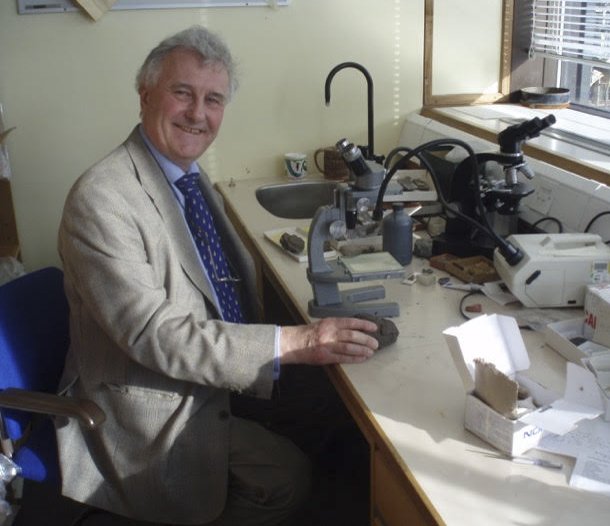Richard Fortey on the Trilobite Chronometer
Richard Fortey is formerly head of arthropod paleontology at the Natural History Museum in London and is visiting professor of paleobiology at Oxford University. He has devoted much of his research career to the study of trilobites — their systematics, evolution, and modes of life — and has named numerous trilobite species. He outlines their extraordinary 300-million-year history and explains what made them such excellent markers of geological time.
Listen to the podcast here or wherever you listen to podcasts.
Scroll down for illustrations that support the podcast.
Note - playing the podcast is not supported on Internet Explorer; please use any other browser, or listen on Spotify, Apple Podcasts, etc.
Podcast Illustrations
All illustrations courtesy of Richard Fortey unless otherwise indicated.
Trilobite Family Diversity Over the Paleozoic
Although trilobites are the signature organism of the Paleozoic, first appearing in the Early Cambrian, their peak diversity was in the early Paleozoic. They began a general decline in the upper Paleozoic (despite bursts of adaptive radiations in the Ordovician, Silurian, and Devonian periods) that ended with their extinction at the end of the Permian.
Courtesy of S.M. Gon III
Examples of Trilobites
Spiny phacopoid. This is one of many species recently discovered in the Devonian strata of Morocco that have evolved spectacular spiny exoskeletons. These are presumed to have protected the trilobites from attack from the cephalopods that are found in the same strata, and probably from fish as well. Although the number of trilobite families had declined by the Devonian, some of the most bizarre trilobites appeared during that time period, including sightless forms that lived in deep-sea strata.
One of the last Permian trilobites from Oman was fossilized when it had curled itself up into a ball. Scale is one cm. across. Note how the tips of the thoracic segments can slide past one another as the animal enrolled (a piece of the ‘cheek’ has broken off to show this) to produce a very tight state of enrollment. Many trilobites developed an additional “lock” to secure them in the enrolled position.
The Middle Cambrian trilobite Olenoides may have been an early predatory trilobite. It is one of a few trilobites for which the limbs are known from examples preserved in the Burgess Shale of western Canada.
An extraordinary harpetid trilobite from the Devonian of Morocco with a concave brim surrounding the head shield.
A trident-bearing trilobite from the middle Devonian in the Atlas Mountains of Morocco.
Courtesy of the Colorado School of Mines Geology Museum and Ron Wolf
Further Reading
Fortey, R.A. (2000), Trilobite, Vintage Books
Fortey, R.A. (2004), The Lifestyles of the Trilobites, American Scientist 92, 446
Riccardo Levi-Setti (1995), Trilobites, University of Chicago Press
Whiteley, T. et al. (2002), Trilobites of New York, Comstock Publishing Associates
Kennedy, R. et al. (2018), Trilobites of the British Isles, Pemberly Books







